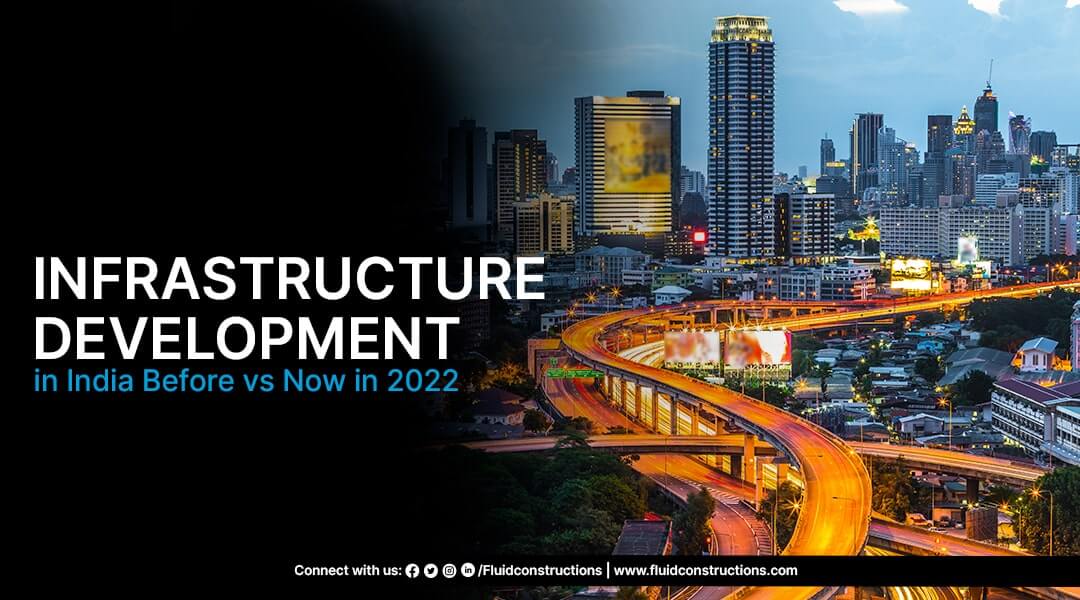
Infrastructure development in India before vs now in 2023
India is one of the fastest-growing economies in the world, and it has been growing at a steady pace for many years. One of the biggest challenges that India faces is its infrastructure development. Many companies are working to solve this problem by building new roads, airports, and other infrastructure projects across India. If you want to learn more about how these companies work together, then continue reading this blog!
The largest infrastructure development company in India is the Government of India. The government is responsible for all infrastructure development in India and has a lot of money to invest in this sector.
The government has been able to achieve great success by investing a lot of money into building roads, railways, ports, and airports as well as other large-scale projects such as dams and bridges.
Successful projects in India
In the past, the Government of India has been building infrastructure since the 1950s. They have been expanding their rail network and expanding roads, as well as building new power plants and airports. This is a great example of how public-private partnerships can be successful in India.
In addition, the government is making a point of developing its infrastructure, by building ports or airports, for example.
Infrastructure development in India before now was far less than that in 2022
Earlier, infrastructure development in India was far less than that in 2022. The country was also grappling with the issue of unplanned growth and urbanization. The Indian Government, however, has taken measures to improve infrastructure in India. In 2022, India’s infrastructure development was better than it had ever been before.
The country is now ranked as one of the top 10 countries in the world for infrastructure development. The government has invested heavily in improving roads, railways, airports, and communications networks.
Successful projects in the infrastructure sector of India
The government of India wants to build infrastructure to boost the economy and the country’s growth. In 2002, at that time, India had a population of 1 billion people. But by 2022, it will be close to 2 billion people! This means that more people are coming into our world than ever before in history. There are many successful projects in this sector because they help improve living standards for everyone living on Earth today and those who come after us tomorrow (and will).
India: One leading destination
The country is one of the leading destinations for direct foreign investments. India has been a leading destination for foreign direct investments (FDI) in the world. The country is one of the leading destinations for FDI, especially in infrastructure development. The Indian economy is growing at a fast rate and this growth has led to an increase in infrastructure demand.
The government of India to boost the economy
The government of India wants to build infrastructure to boost the economy and the country’s growth. In addition, they want to improve the quality of life for people in India through new roads, bridges, and other public works projects.
The government of India has spent billions of dollars on funding these infrastructure projects over time. However, this spending has not always been effective at achieving its goals: some critics argue that it didn’t live up to what was promised or even wanted by politicians who wanted quick results from their investments in construction projects instead of long-term maintenance costs that could save money in future years (when new structures need repair).
Challenges and Opportunities
There are a lot of challenges, but there are also many opportunities for infrastructure development in India. In 2022, India will have a population of over 1 billion people. The country is growing at an average rate of 7% annually, which means that it will continue to grow in size and importance for the rest of the world. Infrastructure development in India has been slow on account of its lack of resources, but there are several opportunities for infrastructure development in India:
- New roads and bridges are being built all across India by private companies who want to expand their businesses by providing better service than local Government agencies could provide on their own. These new roads and bridges will allow more people from other states access to other areas where they might want to shop or visit attractions such as museums or tourist sites (like the Taj Mahal). This helps increase tourism revenue while also expanding economic activity within each state’s borders since many tourists choose not just one destination but multiple choices when visiting different locations around town!
- The government can use some sort of incentive program such as tax refunds if businesses invest money into building new structures instead of using old ones like rotting wooden beams used after being damaged during floods several years ago.”
India needs more infrastructure development
In order to keep up with China and other countries, India needs more infrastructure development. India is a developing country and needs more infrastructure development. The Indian Government has invested millions of dollars in building bridges across the country, but it still has a long way to go when it comes to infrastructure development. India has one of the fastest-growing populations in the world – over 1 billion people! This means that there will be huge increases in demand for goods and services over time; this includes transportation systems such as roads, railways, or airports; power plants (for example coal-fired ones); water supply systems such as dams etc, sewerage networks etc, telecommunication facilities such as mobile phone towers along with many others).
Conclusion
You can see that India needs more infrastructure development. The country’s growth rate is increasing, becoming a major destination for direct foreign investments. If the Government of India wants to build an economy with higher wages and better conditions for workers, then they need to invest in the construction sector.
